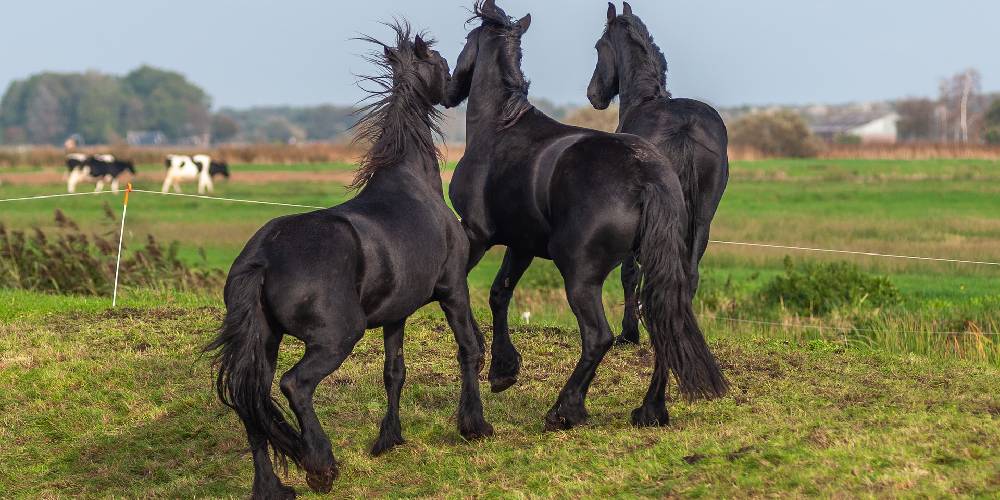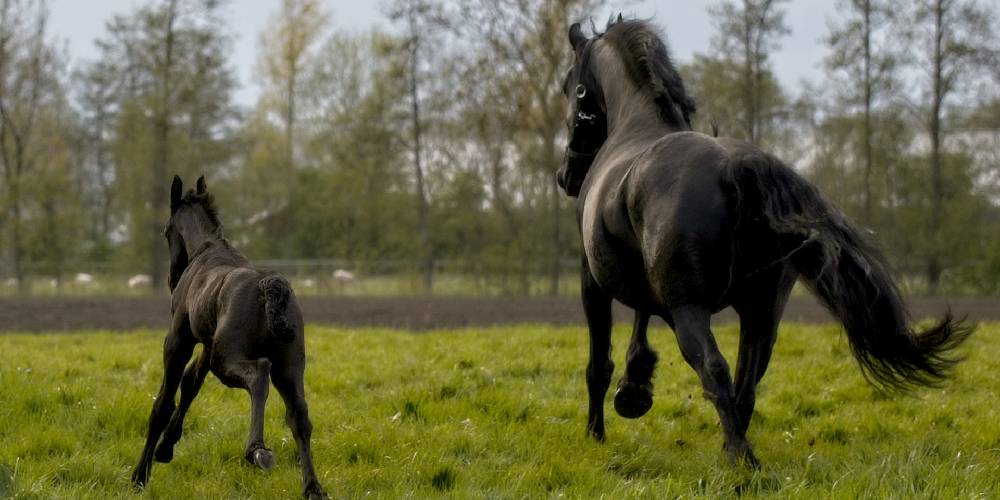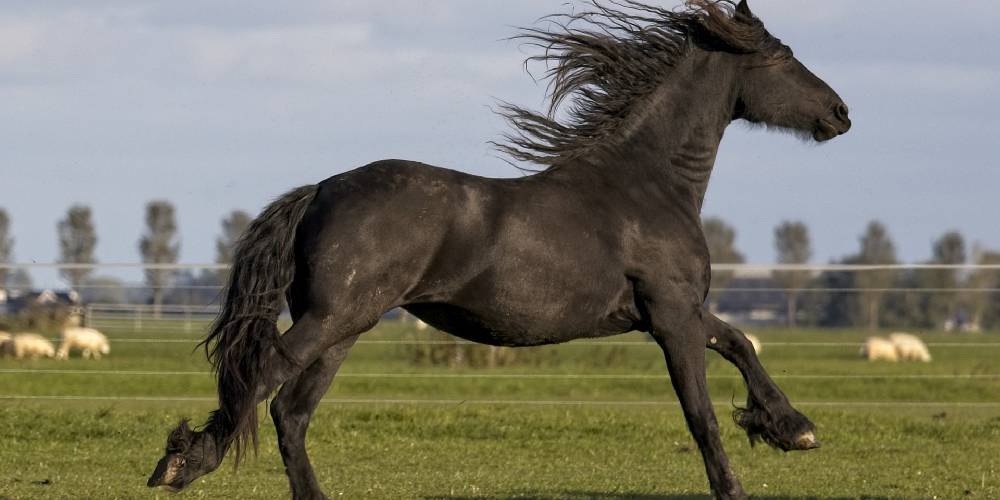The Dales Pony is a beautiful pony breed that is often confused with the Fell pony breed. This pony breed is actually a descendant of the magnificent Friesian horse which gives these ponies a regal majestic appearance. These ponies are desired for use by children because of their docile temperaments and make excellent riding ponies. If you want to learn more about this breed, keep reading!
What Is The Dales Pony
The Dales Pony is a beautiful pony breed whose origins are found in the country of England. This pony breed is partially descended from the great Friesian horse which is where they get their glistening dark coats and majestic appearance. Because of this breed’s docile temperament, the Dales pony is most popularly used by children for general riding.
Basic Breed Information
| Country of Origin | England/Britain |
| Height | Must stand below 14.2 hands |
| Weight | 1,000 pounds (453.5 Kilograms) |
| Coat Colors | Mostly black, but can come in bay |
| Temperament | Docile |
How Big Is The Dales Pony?
The Dales pony is considered a large pony because of both its height and its weight.
These ponies can stand up to 14.2 hands high which is the exact height a horse needs to be considered a pony. The average height for these ponies is between 13.1 and 14.2 hands high.
The average weight for this pony breed falls around 1,000 pounds (453.5 Kilograms). The reason these ponies weigh so much is because of the fact that they are built really heavily and have a dense structure.
What Colors Do Dales Ponies Come In?

The most common color that this pony can be is black. The main reason that black is the most common color is the fact that the Friesian horse breed played a large role in the development and creation of this pony.
Because of the Friesian influence, only dark colors can be seen in this breed. The 2 colors seen in the Dales pony include:
- Black
- Bay (can be dark bay, black bay, blood bay, and light bay)
The History Of This Breed
The history of the Dales pony is really quite an interesting story. The ancestry of these ponies has been traced back hundreds of years.
This pony breed is often confused with the Fell Pony breed. These two breeds likely had similar if not the same ancestry which is why they look so much alike.
This breed was partly descended from the old Friesian horse of Europe and the Forest Horse. Not just these two bloodlines started the creation of this pony breed. Many other breeds were crossed into the Dales pony’s early bloodlines as well to further develop the breed.
One of the most influential stallions used in the creation of the Dales pony breed was a Welsh Pony stallion named Comet. This stallion passed on great movement traits and improved the action of the breed.
Because these ponies have such great strength and endurance, they were really popularly used in the mines. Dales ponies were asked to carry really heavy loads of lead ore from the mines of Northumberland and Durham to different smelt mills.
Certain farmers used this pony above any other Equine breed because of its strength, great temperament, and stamina. Because of where they are descended, these ponies were really suited for high climates and rough terrains which is why they were really popular on farms set on hills or at higher altitudes. Sometimes these ponies will even do better than tractors on certain farms.
How To Identify This Breed
The Dales breed is a fairly early pony breed to recognize. There are certain traits that you can pull from this horse to make it easier to tell them apart from different breeds. Some of these traits include:
Neck
Dales ponies have thick strong necks that, when the pony is trained and strong enough, arches neatly and is tucked up.
Legs
Like other heavily built horses and ponies, the Dales pony has strong hard legs that are adorned with feathers on the lower half of them.
Round Barrel
Like many other pony breeds, these ponies have a round barrel with well-sprung ribs. This allows the horse to have better stamina as it allows for maximum lung movement and air intake.
Mane & Tail
Like both their Friesian and pony ancestors, the Dales pony has a really thick mane and tail.
Color
Black and bay are the only two colors that this breed can be. Because of this, a pony that carries these other traits but is of a different color cannot be classified as the Dales pony (that pony may actually be a Fell pony instead).
What Are Dales Ponies Used For & Good At?
These ponies do great at a number of different things. The things that these ponies excel at include:
General Riding
Because of their large size, Dales ponies can be ridden for pleasure by both adults and children. Though this breed is more popularly used by children, adults can enjoy riding these ponies too. These ponies are most commonly ridden in the English style of riding with English style tack.
Dressage
Because of their great level of obedience and handsome looks, these ponies do great in the dressage ring. They can be ridden by either children or adults when performing dressage.
Jumping
Though the Dales pony is not necessarily known for its jumping abilities, some can be used as youth jumping horses.
Are Dales Ponies Endangered?
Yes. Sadly this breed is officially recognized as critically endangered. The number of these ponies left surviving is less than 5,000.
An organization in Britain is currently working on the conservation and repopulation of the breed.
What Is The Average Lifespan Of The Dales Pony?

Like most Equine animals, Dales ponies will generally live to be in their mid-20s to early 30s. Because they are a hardy pony breed, however, some can even live to be into their 40s.
This means that the average lifespan of this breed is between 25 and 35 years of age.
Fun Facts On This Breed
- The Dales Pony is officially recognized as critically endangered
- A purebred Dales Pony cannot be any color besides bay and black

